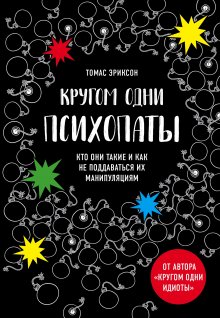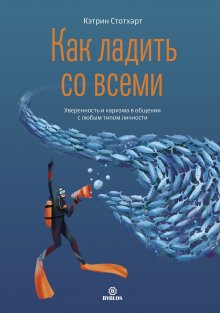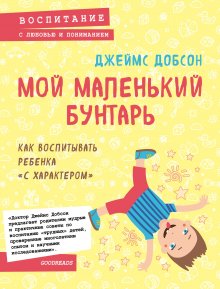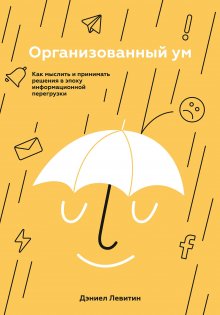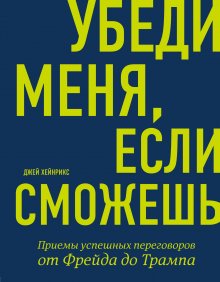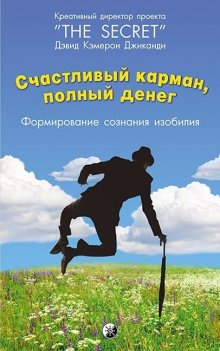Адам Алтер - Не оторваться. Почему наш мозг любит всё новое и так ли это хорошо в эпоху интернета
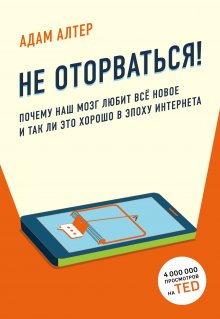
Все авторские права соблюдены. Напишите нам, если Вы не согласны.
Описание книги "Не оторваться. Почему наш мозг любит всё новое и так ли это хорошо в эпоху интернета"
Описание и краткое содержание "Не оторваться. Почему наш мозг любит всё новое и так ли это хорошо в эпоху интернета" читать бесплатно онлайн.
45
О Ли Робинс и ее исследованиях: Lee N. Robins, «Vietnam Veterans’ Rapid Recovery from Heroin Addiction: A Fluke or Normal Expectation?», Addiction 88, no. 8 (1993), 1041–54; Lee N. Robins, John E. Helzer, and Darlene H. Davis, «Narcotic Use in Southeast Asia and Afterward», Archives of General Psychiatry 32, no. 8 (1975): 955–961; Lee N. Robins and S. Slobodyan, «Post-Vietnam Heroin Use and Injection by Returning US Veterans: Clues to Preventing Injection Today», Addiction 98, no. 8 (2003): 1053–60; Lee N. Robins, Darlene H. Davis, and Donald W. Goodwin, «Drug Use by U.S. Army Enlisted Men in Vietnam: A Follow-up on Their Return Home», American Journal of Epidemiology 99, no. 4 (май 1974): 235–49; Lee N. Robins, The Vietnam Drug User Returns, final report, Special Action Office Monograph, Series A, Number 2, май 1974, prhome.defense.gov/Portals/52/Documents/RFM/Readiness/DDRP/docs/35%20Final%20Report.%20The%20Vietnam%20drug%20user%20returns.pdf; Lee N. Robins, John E. Helzer, Michie Hesselbrock, and Eric Wish, «Vietnam Veterans Three Years after Vietnam: How Our Study Changed Our View of Heroin», American Journal on Addictions 19, 203–11 (2010); Thomas H. Maugh II, «Lee N. Robins Dies at 87; Pioneer in Field of Psychiatric Epidemiology», Los Angeles Times, 6 октября 2009, www.latimes.com/nation/la-me-lee-robins6-2009oct06-story.html.
46
Информация об Олдсе и Милнере получена из двух источников – интервью с их учениками Бобом Вурцем, Гэри Астон-Джонсом, Арье Руттенбергом и Джоном Дистерхофтом, а также из статей: James Olds and Peter Milner, «Positive Reinforcement Produced by Electrical Stimulation of Septal Area and Other Regions of Rat Brain», Journal of Comparative and Physiological Psychology 47, no. 6 (декабрь 1954): 419–27; James Olds, «Pleasure Centers in the Brain», Scientific American 195 (1956): 105–16; James Olds and M. E. Olds, «Positive Reinforcement Produced by Stimulating Hypothalamus with Iproniazid and Other Compounds», Science 127, no. 3307 (16 мая 1958): 1155–56; Robert H. Wurtz, Autobiography, n.d., www.sfn.org/~/media/SfN/Documents/TheHistoryofNeuroscience/Volume%207/c16.ashx; Richard F. Thompson, James Olds: Biography (National Academies Press, 1999) www.nap.edu/read/9681/chapter/16.
47
Информация о Вайсберге, его зависимости от WoW и излечении в центре reSTART получена из двух интервью с Айзеком Вайсбергом.
48
Соответственно 88,4 и 106,6 кг. (Прим. ред.)
49
Anne-Marie Chang, Daniel Aeschbach, Jeanne F. Duffy, and Charles A. Czeisler, «Evening Use of Light-emitting eReaders Negatively Affects Sleep, Circadian Timing, and Next-morning Alertness», Proceedings of the National Academy of Sciences 112, no. 4 (2015): 1232–37; Brittany Wood, Mark S. Rea, Barbara Plitnick, and Mariana G. Figueiro, «Light Level and Duration of Exposure Determine the Impact of Self-luminous Tablets on Melatonin Suppression», Applied Ergonomics 44, no. 2 (март 2013) 237–40. Apple недавно предложила функцию Night Shift на экранных устройствах: цвет экрана с течением дня меняется, чтобы синий свет не возникал перед сном: www.apple.com/ios/preview/. См. также: Margaret Rhodes, «Amazon and Apple Want to Save Your Sleep by Tweaking Screen Colors», Wired, 1 января, 2016, www.wired.com/2016/01/amazon-and-apple-want-to-improve-your-sleep-by-tweaking-screen-colors/; TechCrunch, «Arianna Huffington on Technology Addiction and the Sleep Revolution», 20 января 2016, techcrunch.com/video/arianna-huffington-on-politicsand-her-new-book-the-sleep-revolution/519432319/.
50
K. M. O’Craven and N. Kanwisher, «Mental Imagery of Faces and Places Activates Corresponding Stimulus-Specific Brain Regions», Journal of Cognitive Neuroscience 12, no. 6 (2000): 1013–23; Nancy Kanwisher, Josh McDermott, and Marvin M. Chun, «The Fusiform Face Area: A Module in Human Extrastriate Cortex Specialized for Face Perception», Journal of Neuroscience 17, no. 11 (1 июня 1997): 4302–311.
51
Большая часть информации в этой главе получена из интервью с исследователями зависимостей и специалистами по физиологической психологи: Клер Гиллан, Николь Авеной, Джессикой Барсон, Кентом Берриджем, Эндрю Лоуренсом, Стэнтоном Пилом и Майей Шалавиц.
52
Maia Szalavitz, «Most of Us Still Don’t Get It: Addiction Is a Learning Disorder», Pacific Standard, 4 августа 2014, www.psmag.com/health-and-behavior/us-still-dont-get-addiction-learning-disorder-87431; см. также Maia Szalavitz, «How the War on Drugs Is Hurting Chronic Pain Patients», Vice, 16 июля 2015, www.vice.com/read/how-the-war-on-drugs-is-hurting-chronic-pain-patients-716; Maia Szalavitz, «Curbing Pain Prescriptions Won’t Reduce Overdoses. More Drug Treatment Will», Guardian. 26 марта 2016, www.theguardian.com/commentisfree/2016/mar/29/prescription-drug-abuse-addiction-treatment-painkiller.
53
Arthur Aron and others, «Reward, Motivation, and Emotion Systems Associated with Early-Stage Intense Romantic Love», Journal of Neurophysiology 94, no. 1 (1 июля 2005), 327–37; см. также: Helen Fisher, «Love Is Like Cocaine», Nautilus, 4 февраля, 2016, nautil.us/issue/33/ attraction/love-is-like-cocaine. См. также: Richard A. Friedman, «I Heart Unpredictable Love», New York Times, 2 ноября, 2012, www.nytimes. com/2012/11/04/opinion/sunday/i-heart-unpredictable-love.html; Helen Fisher, Arthur Aron, and Lucy L. Brown, «Romantic Love: An fMRI Study of a Neural Mechanism for Mate Choice», Journal of Comparative Neurology 493 (2005): 58–62.
54
Информация о Пиле получена в ходе интервью с ним, а также из трех книг: Stanton Peele and Archie Brodsky, Love and Addiction (New York: Taplinger, 1975); Stanton Peele and Archie Brodsky, Love and Addiction (New York: Taplinger, 1975); Stanton Peele, The Meaning of Addiction: An Unconventional View (Lexington, MA: Lexington Books, 1985); Stanton Peele and Archie Brodsky, with Mary Arnold, The Truth about Addiction and Recovery: The Life Process Program for Outgrowing Destructive Habits (New York: Fireside, 1991).
55
Isaac Marks, «Behavioural (Non-chemical) Addictions», British Journal of Psychiatry 85, no. 11 (ноябрь 1990): 1389–94.
56
American Psychiatric Association, Diagnostic and Statistical Manual of Mental Disorders (5th ed.), Washington, DC: American Psychiatric Publishing, 2013).
57
Информация о Риландере и его исследованиях получена из интервью с Эндрю Лоуренсом и Кентом Берриджем; см. также Andrew D. Lawrence, Andrew H. Evans, and Andrew J. Lees, «Compulsive Use of Dopamine Replacement in Parkinson’s Disease: Reward Systems Gone Awry?», Lancet: Neurology 2, no. 10 (октябрь 2003): 595–604; A. H. Evans and others, «Punding in Parkinson’s Disease: Its Relation to the Dopamine Dysregulation Syndrome», Movement Disorders 19, no. 4 (апрель 2004): 397–405; Gösta Rylander, «Psychoses and the Punding and Choreiform Syndromes in Addiction to Central Stimulant Drugs», Psychiatria, Neurologia, and Neurochirurgia 75, no. 3 (май – июнь 1972): 203–12; H. H. Fernandez and J. H. Friedman, «Punding on L-Dopa», Movement Disorders 14, no. 5 (сентябрь 1999): 836–38; Kent C. Berridge, Isabel L. Venier, and Terry E. Robinson, «Taste reactivity analysis of 6-Hydroxydopamine-Induced Aphasia: Implications for Arousal and Anhedonia Hypotheses of Dopamine Function», Behavioral Neuroscience 103, no. 1 (февраль 1989): 36–45. Берридж и Лоуренс опубликовали десятки статей о мозге и зависимости. См.: Берридж: lsa.umich.edu/psych/research&labs/berridge/Publications.htm; Лоуренс: psych.cf.ac.uk/contactsandpeople/academics/lawrence.php#publications.
58
Видео, в котором Коннолли обсуждает с Конаном О’Брайеном болезнь Паркинсона и ее лечение: teamcoco.com/video/billy-connolly-hobbit-hater.
59
Xianchi Dai, Ping Dong, Jayson S. Jia, «When Does Playing Hard to Get Increase Romantic Attraction?», Journal of Experimental Psychology: General 143, no. 2 (апрель 2014): 521–26.
Подписывайтесь на наши страницы в социальных сетях.
Будьте в курсе последних книжных новинок, комментируйте, обсуждайте. Мы ждём Вас!
Похожие книги на "Не оторваться. Почему наш мозг любит всё новое и так ли это хорошо в эпоху интернета"
Книги похожие на "Не оторваться. Почему наш мозг любит всё новое и так ли это хорошо в эпоху интернета" читать онлайн или скачать бесплатно полные версии.
Мы рекомендуем Вам зарегистрироваться либо войти на сайт под своим именем.
Отзывы о "Адам Алтер - Не оторваться. Почему наш мозг любит всё новое и так ли это хорошо в эпоху интернета"
Отзывы читателей о книге "Не оторваться. Почему наш мозг любит всё новое и так ли это хорошо в эпоху интернета", комментарии и мнения людей о произведении.






